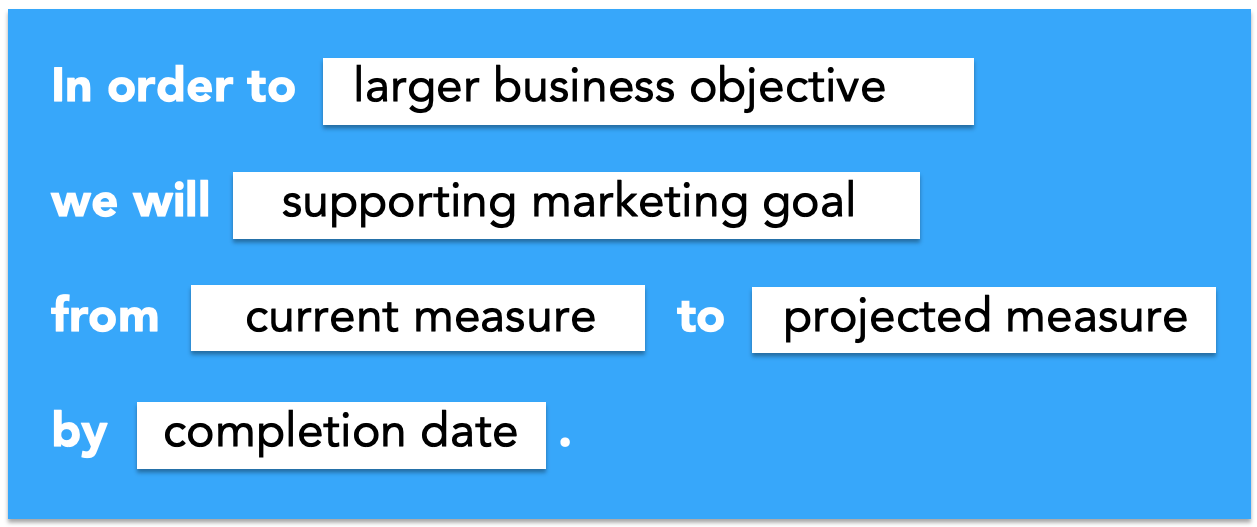Description
The purpose of the S.M.A.R.T. Goal Template is to determine a clear and measurable goal for your marketing initiative. S.M.A.R.T. is an acronym for the qualities of an effective goal: Specific (target a specific area for improvement), Measurable (quantify an indicator of progress), Achievable (ensure it is possible to accomplish), Relevant (align with a larger business objective), and Time-bound (state when result will be achieved). Determining an effective goal is critical for marketers to create and approve marketing briefs, develop and provide feedback on marketing plans, and measure the effectiveness of marketing initiatives. Using S.M.A.R.T. goals consistently can help marketers keep their focus on marketing outcomes over marketing outputs.
Questions
The S.M.A.R.T. Goal Template helps to answer marketing questions like:
What does this marketing initiative ultimately need to accomplish?
What larger business objective does this marketing initiative support?
What do we need to measure to evaluate the performance of this initiative?
Steps
Determine the scope of your marketing initiative. The scope needs to be tight enough that it aligns with a single business objective and single marketing goal. Large, complex initiatives require S.M.A.R.T. goal sets.
Identify the larger business objective that your marketing initiative supports. This objective is what impacts your bottom line (e.g. increase market share) and necessitates marketing investment.
Identify the marketing goal that supports your larger business objective. This goal can be accomplished by marketing (e.g. acquire new customers) and becomes the focal point for your marketing plan.
Determine the metrics that you can use to measure your progress toward your marketing goal. These metrics need to be as accurate, timely, and precise as possible to report on your performance.
Identify the date that you need to accomplish your marketing goal to support your larger business objective. This date can be used to establish interim performance targets throughout an initiative.
Considerations
Request that business stakeholders identify their own S.M.A.R.T. goals to ensure alignment with marketing.
Use S.M.A.R.T. goals to calculate your anticipated return, which can be used to determine your budget.
Include S.M.A.R.T. goals within your marketing briefs and within your performance reviews where possible.
References
S.M.A.R.T. goal is credited to George T. Doran.
Doran, G.T. “There’s a S.M.A.R.T. way to write management’s goals and objectives”, Management Review, 70 (11): 35-36, 1981.

